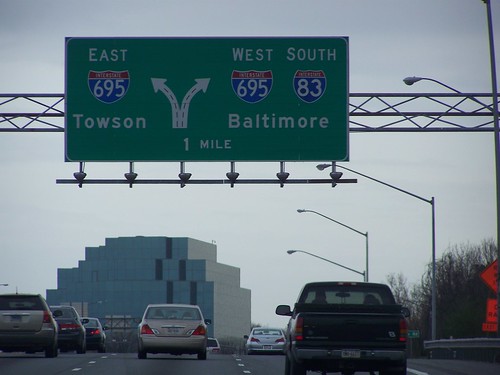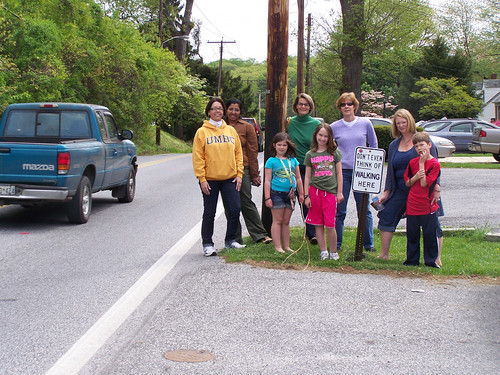It's not about choice or trust but design
 Design, not always, but often, is destiny.
Design, not always, but often, is destiny.If you design and manage a system in a particular way, its production systems work to generate the outcomes or outputs designed to be produced by the system.
This is a pretty basic concept. The textbook Social Psychology of Organizations (out-of-print) applies such principles to organizations.
So while I will rail against "choice" being the solution for the allocation of scarce transportation resources including space, similarly I wail to myself over the billions of dollars of resources focused on various organizational "reform" efforts, including schools.
So the deposed superintendent of the Chicago School System has an op ed in the Chicago Tribune, "Chicago schools need radical change," about what the school system and school reform movement needs is massive change.
While that's true, and he makes some decent points:
While we made tremendous progress in less than two years, resulting in some historic gains, transformational change will require a radical redefinition of the district.
The bureaucracy of CPS, like most urban districts, has great inertia toward the comfortable. The fact is the public school district is an outdated model that is not flexible or responsive enough to serve the needs of all students. We must abandon the notion that a central administration can do it all and instead flip the pyramid, entrusting and empowering our principals and teachers to create great schools.
In order to break up the bureaucracy that often paralyzes, confuses or distracts schools, the central office must shift from a top-down division that dictates quality and practice for schools to a team that acknowledges that quality and effective practices lie within our schools. Central office's primary role must be to set high standards, and then codify and disseminate effective practices found within schools.
Supported by a new Office of Strategy Management, the following interrelated and mutually reinforcing levers, aligned to the initial reform blueprint that we created, can bring about the transformational change promised by my administration:
• Empowered, effective principals ...
• More high-quality schools. ...
• Empowered and engaged families ...
 He misses the most fundamental point. It's about the system that we develop, the structure, systems, and processes, and the outputs/outcomes that those systems are designed to produce.
He misses the most fundamental point. It's about the system that we develop, the structure, systems, and processes, and the outputs/outcomes that those systems are designed to produce.For example, relying on "empowered principals" rather than building a robust system of support and structure is likely to generate minimal improvements. Most people aren't capable of generating meta-theory at the level of best practice.
Although in this sentence:
the central office must shift from a top-down division that dictates quality and practice for schools to a team that acknowledges that quality and effective practices lie within our schools
he almost recognizes the power of "positive deviance" (see "Your Company's Secret Change Agents" from the Harvard Business Review) as a way to push change forward in a systematic fashion.
But positive deviance is about transforming organizations systematically by highlighting and adopting best practice that already exists. It is not about more anarchical decentralization (which is how DC's charter school initiative functions, to some extent to the detriment of schooling as a "system").
If the outcomes aren't what we want, then we need to change the structure and processes.
If we do this in an idiosyncratic fashion--which typifies most "reform" efforts driven by the political process--we end up not changing much of anything, but expending a great deal of effort and money, and generating failure.
So it's all about systematic change and "design" in this case of processes.
The bicycle and pedestrian planning process that I ran in Baltimore County is a good example of how to do this, even if it didn't accomplish everything I would have liked (but so far it's been 3 years and one month into the process).
We didn't have enough time and budget to do everything I wanted to cover in the plan (and the county was not willing to spend a bit more money--remember at that time, budgets of local governments were getting crushed--beyond the grant to do the things we couldn't get too, such as a crash analysis).
Plus, certain matters weren't allowed to be addressed in a significant fashion. For example, a bunch of stuff was excised from the draft I submitted versus the draft that was posted.
However there are at least three things going on in Baltimore County with regard to biking and walking that are just about at the level of being unprecedented in terms of an example of systematic improvement in bike and pedestrian planning and practice, and they derived from elements of the planning process and the way I designed it to be integrated and intertwined from the standpoint of process redesign:
1. The plan (like the plan before) called for the creation of a county-wide pedestrian and bicycle advisory committee.
After the 2010 election, advocates jumped on this (the plan was posted in August 2010, and was approved by the Planning Board this year, and likely will be adopted by the County Council by the end of the year, about 3 years faster than the Eastern County Plan adoption process) and got new Councilmembers to put legislation forward to not only create the committee, but to adopt a number of process-organizational change elements that were outlined in the plan.
In February 2011, the bill was approved. (See the past blog entry "Baltimore County passes pedestrian & bicycle legislation unanimously" for a discussion of the back story.)
 2. Baltimore County is large, over 600 square miles. Pretty much each Council District is bigger than the entire city of Washington, DC. So the plan that I submitted also called for the option of having council district advisory committees functioning as subcommittees of the countywide committee. While that concept was excised from the posted draft, it made it back into the legislation.
2. Baltimore County is large, over 600 square miles. Pretty much each Council District is bigger than the entire city of Washington, DC. So the plan that I submitted also called for the option of having council district advisory committees functioning as subcommittees of the countywide committee. While that concept was excised from the posted draft, it made it back into the legislation.This allows for focused advocacy and implementation at the level of a Council District. So far, such a committee has been created for District 5 ("Committee seeks state grant to help create Towson 'Bike Beltway': Marks' panel proposes dedicated bike loop through downtown,” Baltimore Sun) and other Councilmembers are considering similar moves.
(Note that Orange County, California has created a 4th District Bikeways Strategy as a pilot, in part at the instigation of the County Councilman for that district.)
3. Part of the plan called for an adoption of a Complete Streets policy (I thought that just including it in the plan was enough, but one of the Community Planners was insistent, and I think he was right, that it needed to be be a separate ordinance) and this language was included as part of the Ordinance approved last year.
Now they are working on the policy language and regulations to implement adoption of the Complete Streets policy, and from what I've heard the language is very good--in large part because they follow recommendations in the draft I submitted (even though this section was mostly excised from the posted draft).
So here you have a plan with integrated process redesign recommendations, that get adopted through legislation (almost 2 years before the plan is adopted), with enablement through [parallel changes in regulations and procedures and review requirements.
While I admit that an unusual confluence of events and a lot of earlier iterations contributed to the success of this process, without having the right end goals in sight, such achievement is normally not possible and it isn't typical of most planning processes, because of how they are (in)conceived from the outset.
----
E.g., DC's zoning rewrite and maybe even the forthcoming transportation plan, based on the current parking planning exercise going on now, is likely flawed in ways comparable to the execution of urban education reform in cities like Chicago and Washington.
It's about looking at the end goals and building the process to generate those goals.
Labels: change-innovation-transformation, elections and campaigns, electoral politics and influence, organizational behavior, organizational development



1 Comments:
Thank you for a very informative articles.
Post a Comment
<< Home